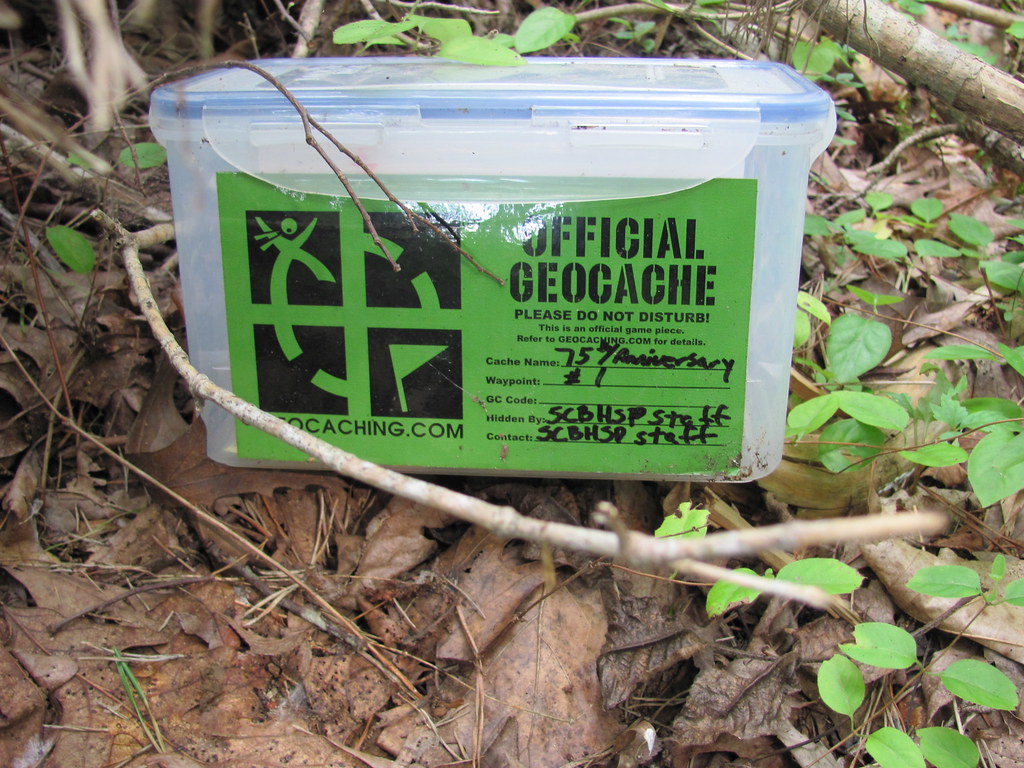Confession time: I have a terrible sense of direction. After getting a smartphone, I embraced the use of navigation systems like Google maps and became much less stressed about the prospect of trying to find a place for the first time. Geolocation, the use of data from GPS or mobile towers to determine the location of a device or smartphone, is one of those facets of our digital world than I seldom think about, but am very glad exists.
Geocaching
For some people, geolocation goes beyond navigation and into the realm of education and entertainment. Before writing this post for Thing 17, I vaguely knew geocaching was and would have told you that the box below was hidden at a specific set of GPS coordinates, and located by others as part of a game.



As part of this thing I created an account and looked at the online descriptions of geocaches near me. While it’s not a hobby I’ll be taking up any time soon, it’s clear that there are people who have a lot of fun with it. If you might be one of them, third Saturday of August is international geocaching day!
Geolocation In AppS
Geocaching is but one app that uses geolocation for an interactive experience. Walking tour apps are another and it will be interesting to see what effect the current situation has on people’s feelings about them. One of their selling points is that they allow users to go where they want to, when they want to, for free and without having to follow route set by a guide, and they can be set up along historical, cultural, or other themes. There don’t seem to be too many of these local to my university, though I did spot a app version of Lincoln’s Roman Trail.
In general, it seems like the creation of a virtual walking tour is one of the potential public engagement outputs of any humanities research project that is strongly tied to a particular place, allowing participants to experience that ‘you are there’ moment that can be part of the fun of engaging with the past.
